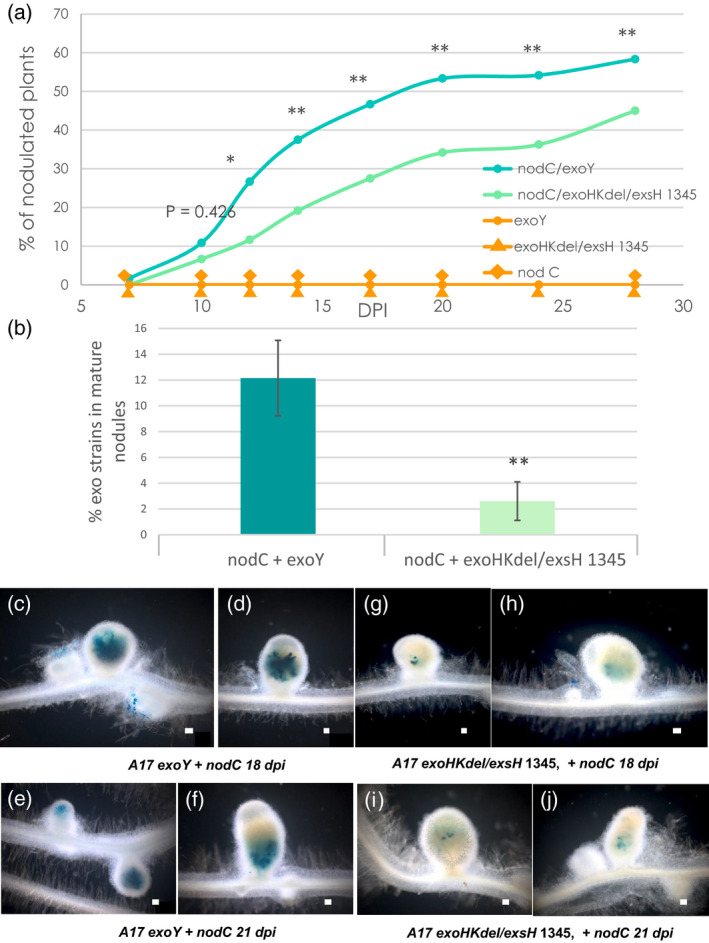Figure 7.

Nodulation defects of exo mutants can be rescued in trans by co‐inoculation with a nodC mutant. M. truncatula WT A17 plants were inoculated with 1:1 mixes of Sinorhizobium meliloti nodC + exoY or S. meliloti nodC + exoHKdel/exsH‐1345, or with individual control strains; exoY, exoHKdel/exsH‐1345 or S. meliloti nodC.
(a) Kinetics of nodule formation at 7, 10, 12, 14, 17, 20, 24, and 28 dpi expressed as percentages of nodulated plants at each time point. Data are the averages of two independent experiments n = 120 for each mixed inoculum. Statistical comparisons were performed between the two types of mixed inoculation on the average number of nodules per plant at each time point. *P < 0.05; **P < 0.01.
(b) Percentages of the exoY or exoHKdel/exsH‐1345 mutants recovered from mature nodules compared with total rhizobial counts recovered. Error bars = SEM. **P < 0.01.
(c–j) Photographs of mature nodules formed in the same experimental set‐up using the exoY and exoHKdel/exsH‐1345 mutants carrying a constitutive hemA‐lacZ reporter gene fusion (pXLGD4) for visualization of bacteria in blue. (c–f) nodules formed following co‐inoculation with S. meliloti 1021 nodC + exoY at 18 dpi (c, d) and 21 dpi (e, f). (g–j) nodules formed following co‐inoculation with S. meliloti 1021 nodC + exoHKdel/exsH‐1345 at 18 dpi (g, h) and 21 dpi (i, j). Scale bars = 100 µm.
